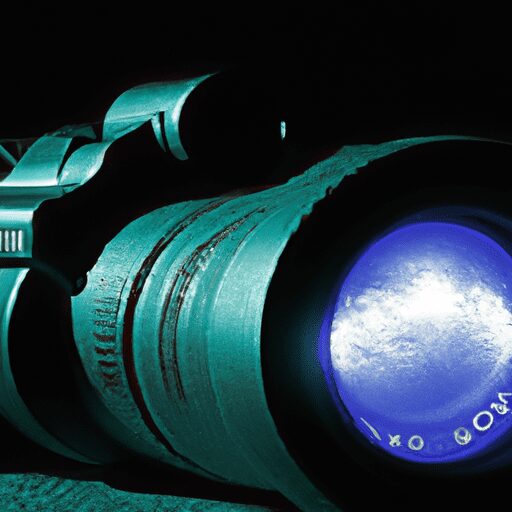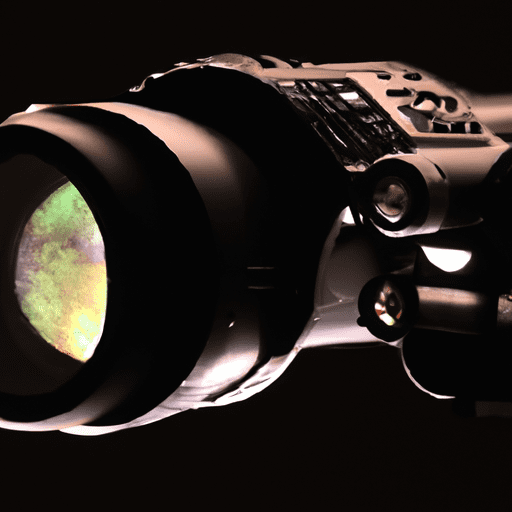

In this article, we will explore the topic of calibrating and adjusting military night vision optics for optimal performance. We will delve into the various factors that contribute to achieving the best possible results when using these specialized optical devices.
Whether you are a military personnel or a night vision enthusiast, understanding the calibration process is key to ensuring clear and accurate night vision imagery. With our helpful tips and techniques, you will be able to make the most out of your military night vision optics and enhance your nighttime visibility.
Understanding Military Night Vision Optics
Night vision optics play a crucial role in modern military operations, providing soldiers with a significant advantage in the darkness of the night. These high-tech devices allow for enhanced visibility and situational awareness, enabling troops to carry out their missions effectively and safely.
Understanding the different types of military night vision optics and the importance of calibrating and adjusting them is essential for maximizing their performance and utility.
Types Of Military Night Vision Optics
There are several types of military night vision optics commonly used by soldiers in the field. The most prevalent ones are image intensifier tubes (IITs) and thermal imaging systems. Image intensifier tubes work by amplifying the available light, including infrared (IR) light, to produce a clear and bright image for the user.
On the other hand, thermal imaging systems detect and display the differences in heat signatures, allowing for the visualization of objects in complete darkness.
Each type of night vision optic has its advantages and limitations, making it important for soldiers to understand their specific capabilities and use them accordingly. IITs provide detailed image clarity and are suitable for scenarios where identifying targets and assessing the environment are critical.
Thermal imaging systems, on the other hand, excel in detecting heat signatures, allowing for the identification of hidden objects and individuals, even in challenging conditions such as fog or smoke.
Importance of Calibrating and Adjusting Night Vision Optics
The performance of military night vision optics depends heavily on their calibration and adjustment. Calibrating refers to the process of aligning the optic’s internal components to ensure accurate and precise readings.
Adjusting, on the other hand, involves fine-tuning various settings to optimize the device’s performance based on specific user preferences and environmental conditions.
Calibrating and adjusting night vision optics is crucial for several reasons. Firstly, it ensures that the image displayed remains clear, sharp, and distortion-free. Any misalignment or improper calibration can result in image distortion, reducing the effectiveness of the optic during critical operations.
Additionally, accurate calibration enhances the device’s target acquisition capabilities, allowing for better accuracy and faster decision-making.
Another vital aspect of calibrating and adjusting night vision optics is optimizing their performance for different lighting conditions. By fine-tuning the settings, soldiers can adapt the optics to various environments, such as low-light, moonlit, or pitch-dark scenarios.
This flexibility enables troops to maintain optimal visibility and situational awareness, regardless of the prevailing lighting conditions.
Preparation For Calibration And Adjustment
Before proceeding with the calibration and adjustment of military night vision optics, it is crucial to gather the necessary tools and equipment and ensure proper handling and safety measures.
Gather Necessary Tools And Equipment
When preparing for the calibration and adjustment process, it is essential to have the right tools and equipment at hand. This typically includes a set of precision screwdrivers, lens cleaning solutions, lint-free cloths, and a light source for testing purposes.
These tools will enable users to access and manipulate the internal components of the optics and ensure their proper functioning.
Ensure Proper Handling And Safety Measures
Handling night vision optics requires careful attention to prevent any damage or mishaps. It is crucial to follow the manufacturer’s instructions and guidelines regarding handling, storage, and maintenance of the device. Additionally, wearing clean gloves during the calibration and adjustment process can help protect the optics from fingerprints and other contaminants that may affect their performance.
Ensuring safety measures during calibration and adjustment involves avoiding exposure to bright lights, as this can damage the sensitive components of the device. Additionally, it is important to handle the optics with care and avoid any sudden impacts or drops that may cause internal damage.
Daytime Preparation for Calibration
Preparing the night vision optics during daylight hours is an essential step before beginning the calibration and adjustment process. This involves cleaning the optics and checking for any damage, as well as verifying the integrity of the batteries.
Clean Optics And Check For Damage
Cleaning the optics helps remove dirt, debris, and smudges that may affect the clarity of the image. Using a lens cleaning solution and a lint-free cloth, gently wipe the lenses and any exposed surfaces of the optic.
Pay attention to any scratches or other signs of damage that may impact the performance and consider seeking professional assistance if significant damage is detected.
Verify the Integrity Of Batteries
A critical component of night vision optics is the battery that powers the device. Before embarking on the calibration and adjustment process, it is essential to ensure that the batteries are in good working condition and have sufficient charge.
Replace any depleted batteries with fresh ones to avoid interruptions or reduced performance during the calibration process.
Calibrating Night Vision Optics
Calibrating night vision optics involves several steps to ensure accurate readings and optimal performance. These steps include understanding the calibration process, adjusting the focus and diopter, aligning the reticle, and setting the brightness and contrast.
Understanding The Calibration Process
The calibration process varies depending on the type and model of the night vision optic being used. It is crucial to consult the manufacturer’s manual or seek professional guidance to understand the specific calibration procedures for your device.
Following the correct calibration process ensures that the optic’s internal components are properly aligned, leading to accurate and distortion-free image reproduction.
Adjusting The Focus And Diopter
Achieving a clear and focused image is essential for the effective use of night vision optics. The focus adjustment allows users to sharpen the image according to their visual preferences, while the diopter adjustment compensates for any differences in individual eyesight. By making these adjustments, users can achieve optimal clarity and prevent discomfort during prolonged use.
To adjust the focus, locate the focus ring on the night vision optic and rotate it until the image appears sharp and detailed to your preference. The diopter adjustment is usually located near the eyepiece and can be adjusted by rotating it until the reticle or image appears clear and crisp.
Aligning The Reticle
Many night vision optics include a reticle or crosshair for improved aiming and target acquisition. Aligning the reticle ensures that it corresponds accurately with the actual point of aim, enhancing accuracy during operations.
To align the reticle, follow the manufacturer’s instructions provided in the manual, ensuring that the reticle lines up precisely with the center of the optic’s field of view.
Setting The Brightness And Contrast
Night vision optics often provide various brightness and contrast settings to adapt to different lighting conditions. Adjusting the brightness and contrast can help optimize the image quality and clarity for optimal performance. Experiment with different settings under different lighting conditions to find the most suitable combination for your specific needs.
Testing Optics Performance
After calibrating night vision optics and making the necessary adjustments, it is crucial to perform a range test to evaluate the device’s performance accurately. This involves conducting an outdoor range test and assessing the image quality and clarity.
Conducting Outdoor Range Test
To conduct an outdoor range test, find a suitable location with sufficient space and a variety of objects at different distances. Check that the area is free from obstacles that may obstruct vision or interfere with the test. In a controlled manner, observe the image quality and clarity of the objects at different distances, ensuring that they are sharp and detailed.
During the range test, also pay attention to any abnormalities in the image, such as distortion or flickering. These issues may indicate further adjustments or the need for professional assistance, as they can significantly impact the optic’s performance during operational use.
Evaluating Image Quality And Clarity
Assessing the image quality and clarity is crucial to ensure that the calibration and adjustment process has been successful. Look for any signs of blurriness or out-of-focus images that may indicate the need for further adjustments or servicing.
Additionally, evaluate the overall performance of the optic in terms of clarity, contrast, and color rendition. Colors should appear natural, and objects should be easily distinguishable without any significant loss of detail. Make any necessary adjustments based on the test results and repeat the process if needed to achieve optimal performance.
Adjusting For Lighting Conditions
Different lighting environments require specific adjustments to optimize the performance of night vision optics. Understanding these lighting conditions and adapting the optics settings accordingly allows for better visibility and situational awareness in various operational scenarios.
Understanding Different Lighting Environments
Nighttime lighting conditions can vary significantly, ranging from faint moonlight to complete darkness. Additionally, artificial lighting sources, such as streetlights or vehicle headlights, may be present in certain urban or suburban environments.
Understanding the prevailing lighting conditions and their impact on image quality is essential for selecting the appropriate settings for the optic.
Adapting Optics Settings For Different Conditions
Night vision optics often come with different settings that can be adjusted to enhance performance under specific lighting conditions. For low-light environments, consider increasing the brightness and contrast settings to improve image clarity. In situations with excessive artificial lighting, reducing the brightness and contrast settings may prevent image washout or glare.
Experimenting with the settings under different lighting conditions and evaluating the image quality will help determine the most suitable adjustments for your specific operational needs. Regularly recalibrate and readjust the optics as required to ensure optimal performance in varying lighting environments.
Calibration and Adjustment Tips
To maintain and optimize the performance of military night vision optics, several tips and best practices should be followed. These include performing regular maintenance and cleaning and seeking professional assistance if needed.
Perform Regular Maintenance and Cleaning
Regular maintenance and cleaning are critical for ensuring the longevity and performance of night vision optics. Clean the lenses and exposed surfaces regularly using a lens cleaning solution and lint-free cloth to remove dirt, debris, and fingerprints. Additionally, inspect the optic for any signs of damage and address them promptly to prevent further deterioration.
Follow the manufacturer’s guidelines for storage, handling, and maintenance to ensure proper care. Avoid exposing the optics to extreme temperatures or humid conditions that may affect their performance. By performing regular maintenance and cleaning, you can maximize the lifespan and functionality of your night vision optics.
Seek Professional Assistance If Needed
In cases where issues persist or become more complex, it is advisable to seek professional assistance. Optics specialists or authorized service centers have the expertise and specialized equipment to diagnose and address intricate problems. Attempting to fix advanced issues without proper knowledge or equipment may cause further damage or void warranties, so it is essential to rely on experts when needed.
Common Issues And Troubleshooting
Despite careful calibration and adjustment, night vision optics may encounter certain issues that hinder their performance. Awareness of these common issues and troubleshooting procedures can help users overcome challenges and restore optimal functionality.
Image Distortion And Flickering
Image distortion and flickering may occur due to various factors, such as misalignment, damaged components, or electrical issues. Troubleshooting these problems often requires professional assistance, as they may require intricate repairs or replacements. Refrain from attempting to fix these issues independently to avoid further damage to the optics.
Battery Drainage Or Inconsistent Power
Battery drainage or inconsistent power supply can significantly impact night vision optics’ performance. Ensure that the batteries are fully charged or replaced with fresh ones before use. If power-related issues persist, inspect the battery compartment and contacts for any signs of damage or corrosion. Clean or replace the batteries and contacts as needed. In case of continuing power issues, consult an expert to address the underlying cause.
Blurry Or Out Of Focus Image
A blurry or out-of-focus image may indicate problems with the optics’ focus adjustment or internal components. Start by rechecking the focus adjustment and recalibrating if necessary, following the manufacturer’s instructions. If the problem persists, it may require professional attention to diagnose and resolve the underlying cause, such as damaged lenses or misaligned components.
Enhancing Night Vision Performance
To further enhance the performance and utility of military night vision optics, there are additional measures and options available to users. These include using accessories and attachments and upgrading to advanced optics.
Using Accessories And Attachments
Night vision optics often come with compatible accessories and attachments that can enhance their functionality. These include magnifiers, filters, and weapon mounts, among others. Magnifiers can extend the device’s effective range, while filters can help reduce glare or enhance contrast in specific environments. Weapon mounts enable seamless integration with firearms, allowing for more accurate targeting and aim.
Consider the specific operational requirements and objectives when selecting and using accessories and attachments to maximize the benefits of night vision optics.
Upgrading To Advanced Optics


As technology advances, so do night vision optics. Upgrading to advanced optics can provide enhanced features, improved image quality, and extended range capabilities. However, upgrading should be carefully considered based on operational needs, budget constraints, and compatibility with existing equipment.
Consult with experts or conduct thorough research to assess the potential benefits and drawbacks of upgrading to advanced optics.
Conclusion
Understanding how to calibrate and adjust military night vision optics is crucial for maximizing their performance and ensuring operational effectiveness. By following the proper calibration and adjustment procedures, users can achieve clear and distortion-free images, enhance target acquisition capabilities, and adapt to different lighting conditions.
Regular maintenance, proper handling, and seeking professional assistance when needed are essential for prolonging the lifespan and optimal functionality of night vision optics. With attention to detail and ongoing care, military personnel can rely on their night vision optics to provide them with the critical advantage they need in the darkness of the night.
Top Night Vision Goggles of 2023: Expert Reviews and Buying Advice
The Ultimate Guide to the Top 5 Night Vision Binoculars for Hunting
Top 5 Night Vision Monoculars for Hunting in 2023 | Best Rating
GOSKY BAK4 Angled Night Vision Scope Review for Hunters
How Do I Minimize Noise When Using Night Vision For Hunting?




